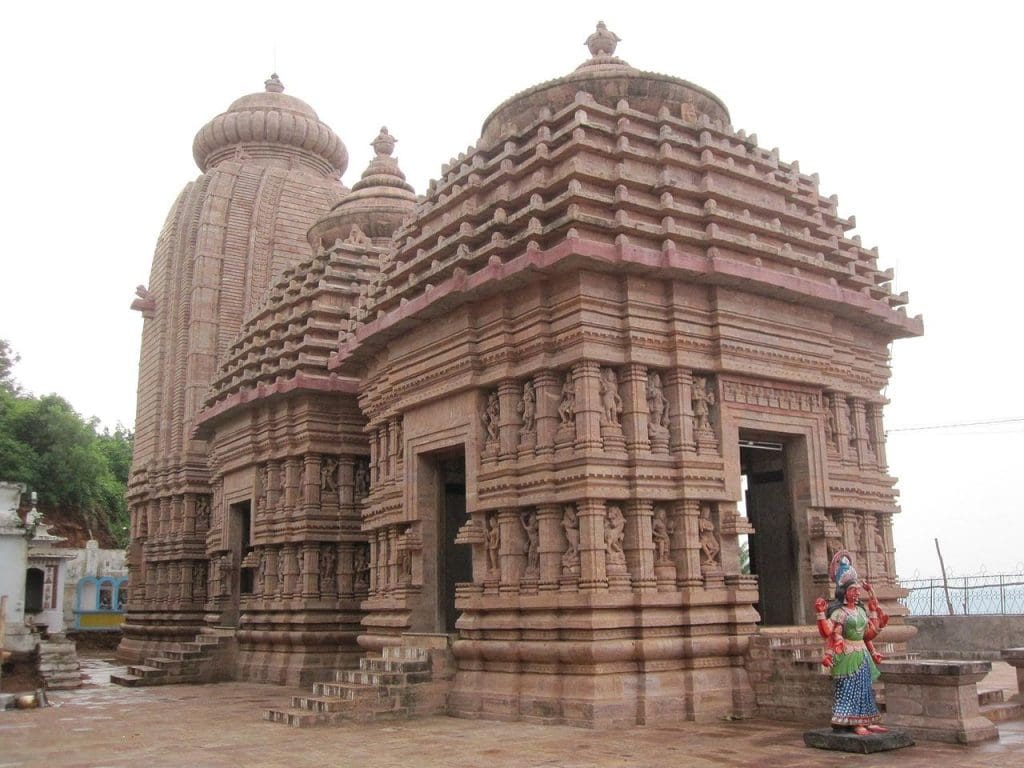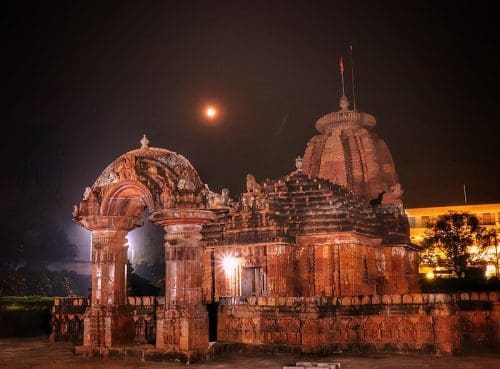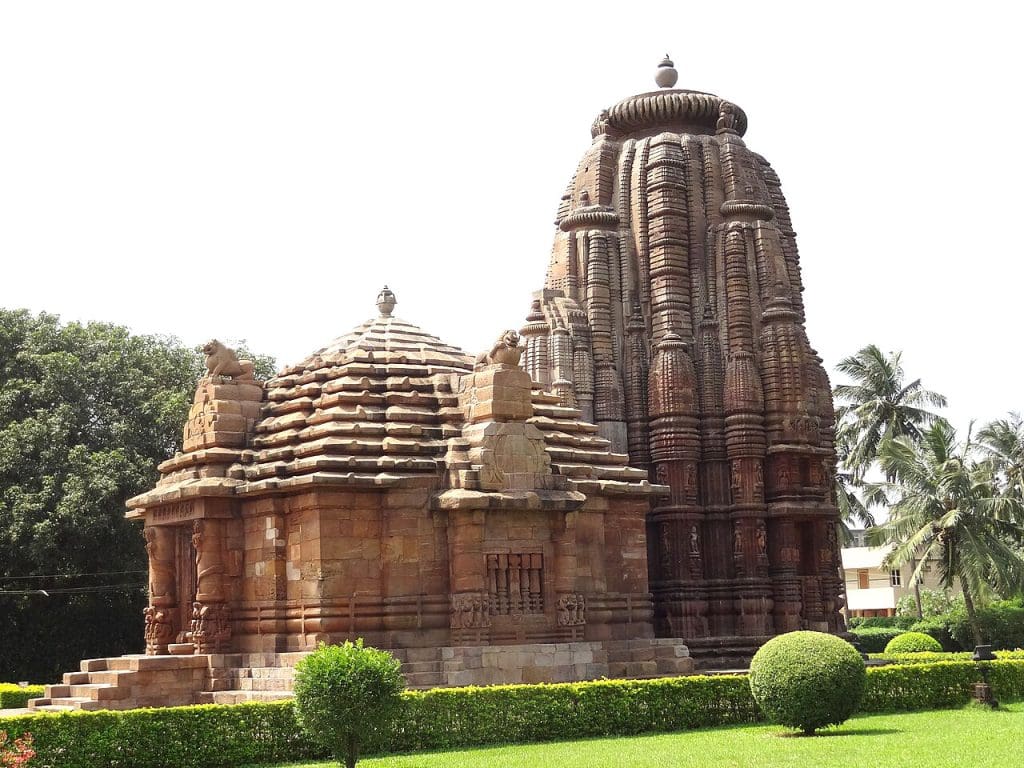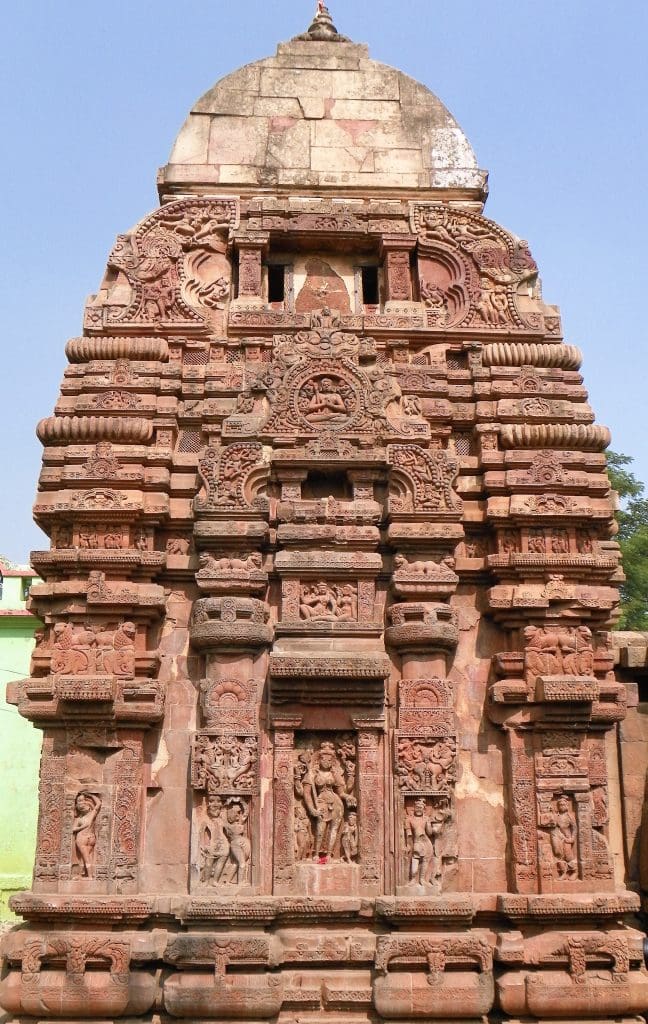Prepare to be enchanted by the vibrant and spiritually uplifting temples to visit in Odisha! Let’s embark on a joyful exploration of the state’s most beautiful and awe-inspiring sacred sites.

There is no scarcity of alternatives regarding the greatest temple in Odisha. The region is among the most picturesque in India and a major tourist attraction. Each year, hundreds of visitors from all over the nation come to experience the state’s natural features, charming people, and kid-friendliness. There are several temples in Odisha (Orissa) that you may explore on your trips.
Konark Sun Temple
The Konark Sun Temple is a magnificent representation of old beauty and inventiveness. It is indeed a Unesco World Heritage Site because of its craftsmanship and ingenuity. The temple is devoted to the Hindu Lord Surya (sun). Although most of the temple has been in ruins and disrepair, it has had enough elegance to keep you interested. It is a symbol of boundless inventiveness.

It has marked the growth and fall of kingdoms. Even now, it draws on our feelings. The temple was built around the 13th century CE by King Narasimhadeva, a monarch of the Eastern Ganga Dynasty who reigned from 1238 to 1250 CE. The temple of Konark has four corners. European sailors who utilized the temple’s black exterior for direction gave it the appellation “Black Pagoda.”
The electrical capabilities of the shrine are thought to have pulled ships to the coast. The sundials etched on this temple precisely tell the time throughout the day and night. The temple’s framework has been developed in such a manner that the sun’s rays drop precisely on the temple’s central sanctuary.
Jagannath Temple
Odisha is indeed recognized as the “Land of Lord Jagannath,” which translates to “Lord of the Universe.” Puri is home to the Jagannath Temple which was constructed in the 12th century AD. During the year, worshippers go from all over the globe to see the Jagannath temple.

The majestic temple’s aesthetic grandeur is overwhelmed by the mystique surrounding Lord Jagannath’s worship. The temple is an incredible sight in and of itself, as well as a massive architectural treasure. Three entrances are located in each of the four cardinal directions and Singhadwara is the temple’s main entrance. These doorways are not structurally coordinated.
Maa Tara Tarini Temple
Maa Tara Tarini Temple is a well-known religious site in southern Odisha, where the twin sister Goddesses Tara and Tarini decorate the shrine. It is situated on a hillock surrounded by the sacred river Rushikulya. During the year, hundreds of devotees, picnickers, and travellers visit Taratarani.

Special blessed occasions associated with the ceremonies and titles of the twin goddess, namely the four Tuesdays of Chaitra and all Sankranties in the Hindu calendar are the major attractions of the temple. To get to this lovely temple, you must walk 999 stairs. Climbing from the bottom to the top of the ridge in the silhouettes of the green vegetation is delightful.
Brahmeswara Temple
The Brahmeswara temple is a Hindu shrine honouring Lord Shiva. Nestled in Bhubaneswar (Odisha), It was constructed around the end of the ninth century CE. The temple was established in the 18th year of Udyotakesari, the Somavamsi King. This relates to the year 1058CE.

The temple is thought to date from the end of the 11th century, as shown by archaeologists. An artifact sent to Calcutta from Bhubaneswar corroborated this. Kolavatidevi built the beautifully sculpted temple from both inside and outside, as per the dedication.
Mukteswara Temple
The Mukteswara Temple was constructed in the tenth century AD where Lord Shiva is honored. It is well-known for its superb architectural work and lovely carvings. According to mythology, this temple was one of the earliest to be erected by the Somavamsi Dynasty. The temple is also known as the “Odisha Gem” due to its magnificence.

The Mukteswara temple is an excellent illustration of Kalinga School architecture. It is a stunning edifice made of sandstone that rises 35 feet tall and is one of the most famous temples of Odisha. The Torana, a majestic arched entryway, is the temple’s major feature. It is indicative of the Buddhist influence in Orissa.
The massive, pillared domed form of the doorway is artistically sculpted with a series of pearls as well as other ornamentation. It has sculptures of joyful women with relaxed attitudes. It’s amazing to observe one-of-a-kind sculptures, such as a gathering of slender sadhus and a bunch of cheerful monkeys. Artwork from the Panchatantra is also exhibited on the outside of the tiled windows.
Parsurameswara Temple
The earliest temple with an entry hall adjacent to the Sanctorum is Parasurameswar Temple. It was constructed during the time of Shailodbhava’s dynasty in the 7th century. It is popularly recognized as the birthplace of Odisha architectural styles. It is among the state’s historically acclaimed temples.
The presence of primitive joints suggests that talent has been gained. The existence of Asta Grahas (8 planets) on its entrance attests to its age. Saptamatrika will be their first representation in the classical architecture of the state. It is a collection of abilities given to goddess Shakti by many gods. It indicates that every Shakti-bearing mother acquires her abilities. Lord Shiva is the main deity at this temple. This is consistent with Sage Parashuram’s atonement and Lord Shiva’s favor.

Rajarani Temple
The name of the temple comes from the Rajarania (red and yellow sandstone) utilized in its development. The structural splendour of the temple is heightened by the amber-coloured stone that has weathered over time. Rajarani Temple is beautiful, with a magnificent combination of skilful imagination, symmetry, and superb workmanship.

It is no surprise that it is regarded as a jewel of Odisha Architectural Styles. It was said to be known as the Indresvara Temple. Lord Shiva is honoured in the Rajarani Temple. It was built in the 11th century throughout the last years of the Somavamsi reign.
Vaital Deula
Vaital Deula Temple is a one-of-a-kind temple that honours the deity Chamunda. It is set in a peaceful part of the ancient city. It is close to the Lingaraja Temple.

It is special due to its peculiar design, which has been designated as “Unique.” Its design was based on the intermediate era of the Kalinga School of Architecture during the 9th century AD. The outside pillars of the temple are covered with diverse portrayals of nature, rites, and personal positions.
A magnificently carved picture of the Sun deity and his seven horses may be seen via the chaitya window on the Jaganmohan façade. The wall engravings of sacrifice rites show that the temple is founded on tantric traditions. There is even a granite pillar where offerings were made to the deity.
Ram Mandir
It is a city temple in Kharvel Nagar that is ideally positioned. It is well-known for its gorgeous design and has been named one of Bhubaneswar’s famous tourist attractions. It is advised for Hindus who revere Lord Rama, who is often claimed as the avatar of Lord Vishnu.

Within the temple grounds, believers can idolize Lord Rama, Lord Lakshman, and Goddess Sita. Lord Hanuman and Lord Shiva, as well as other Hindu deities, are also housed in the main temple.
The shrine contains stunning representations of Lord Rama and Lakshmana, as well as Goddess Sita. The shrine is flanked by a well-kept courtyard. One may spend a weekend witnessing aarti for a peaceful and religious atmosphere.
Lingaraja Temple
Lingaraja Temple is the largest temple not just in Bhubaneshwar, but as well as in the entire state. This temple, which is constructed in the form of a sanctuary structure, is claimed to have been erected in the 8th century.

It has a Dravidian Gopuram, which is common in most temples in South India and honours Lord Shiva and Goddess Parvati. The temple’s interior and exterior walls are covered in engraved sculptures. The ruling deity is an incarnation of Devi Parvati, and this temple has several goddesses.
Within the temple’s walls are sculpted constructions of Maa Durga, Chamunda Devi, Bhairava, and other idols. There are a million Lingas, also referred to as Sahastralingas, in the garden. The tank water within this temple is supposed to offer curative properties for bodily ailments.
Odisha stands out as a beacon of spiritual and cultural magnificence in India, boasting an array of temples that are not only architectural marvels but also repositories of ancient traditions and stories. The sheer diversity and beauty of these temples, set against the backdrop of Odisha’s picturesque landscapes, make it a compelling destination for travellers and devotees alike.
From the warm hospitality of its people to the state’s commitment to preserving its natural beauty and promoting a family-friendly environment, Odisha offers an experience that is both enriching and unforgettable. Whether you are seeking spiritual solace, architectural wonder, or a glimpse into India’s rich cultural tapestry, Odisha’s temples provide a journey that transcends the ordinary, leaving every visitor with memories to cherish for a lifetime.
Read More: Latest



